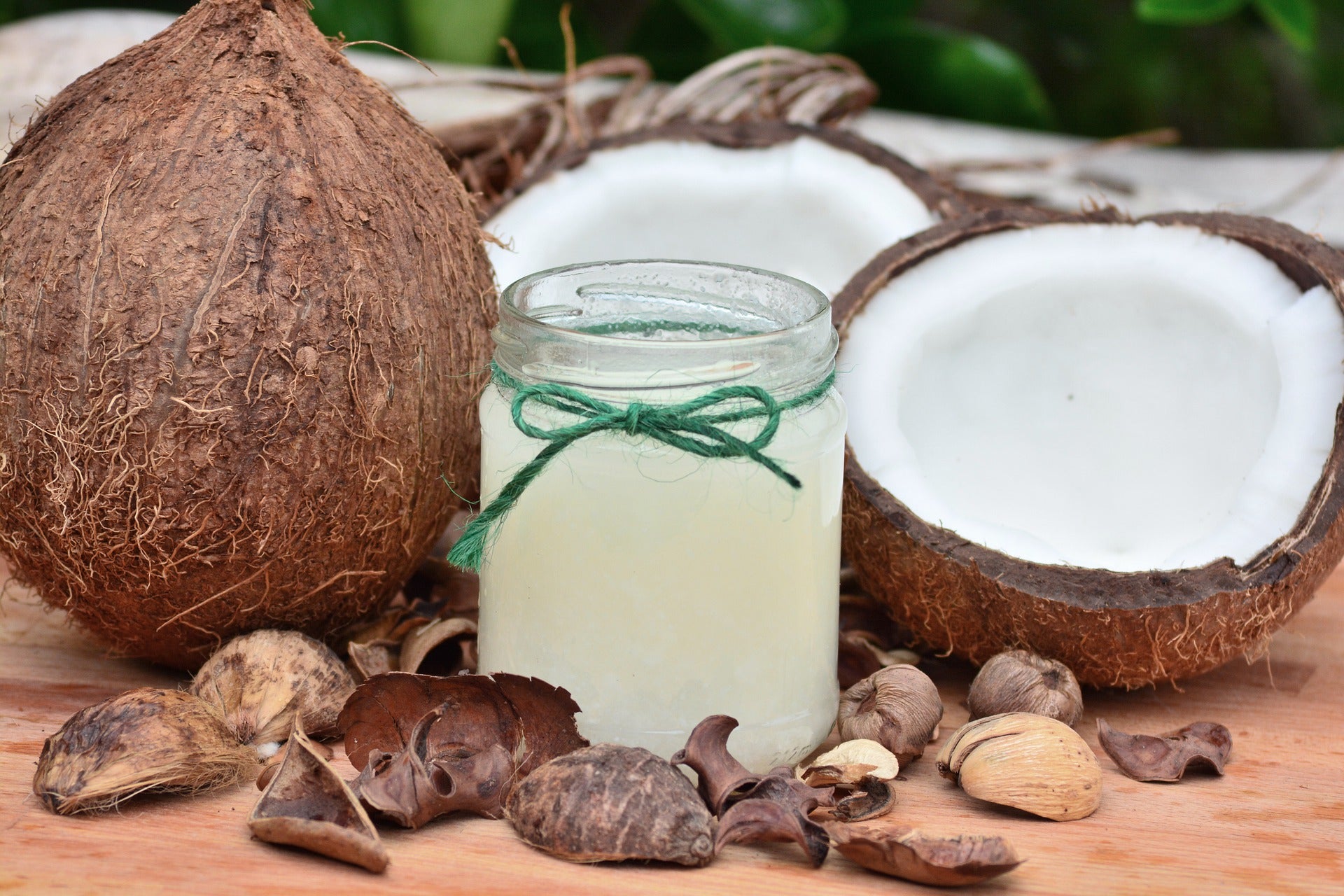In last week's blog post we explained exactly what medium-chain triglycerides (MCTs) are, and how they can benefit your pet's health.
In today's post we'll explore another topic we often get asked about – the difference between saturated and unsaturated fats.
Yep, it can be confusing. There's just so much conflicting information out there about which fats are beneficial for health, and which should be avoided.
Before we go into detail about the different types of fats, it's important to recognize that fat is actually an essential part of a healthy diet. Virtually all natural foods contain some fat, and it's used by the body as a major source of energy.
Fat is also used to absorb vitamins and minerals, support the growth and development of cells, maintain brain and nerve function, and keep skin and tissue healthy.
In fact, fats play an important role in many basic functions in the body – and this is true for both pets and people.
What are Fats?
All fats (lipids) are made of triglycerides – three individual molecules called fatty acids attached to a glycerol molecule. Fatty acids are made of chains of carbon atoms and can be distinguished by the length of their carbon chains.
When a chain of carbon atoms is fully connected with hydrogen atoms, it is considered a saturated fat, or “saturated” with hydrogen atoms.
The terms saturated, monounsaturated, and polyunsaturated refer to the degree of hydrogen saturation.
A monounsaturated fatty acid contains all but one pair of the possible hydrogen atoms it can hold. A polyunsaturated fatty acid is lacking two or more pairs of hydrogen atoms.
In the next section of this post we'll look at the different types of fats and explain their impact on overall health.
Saturated Fats
The carbon atoms in a fat molecule are joined either by a single bond or double bond, depending on whether or not there is a hydrogen atom attached to it. Because saturated fats are fully loaded with a pair of hydrogen atoms, they have only single bonds in their carbon chain, making them more stable.
Saturated fats are found mainly in animal products such as red meat, poultry with skin, whole-milk dairy products, eggs, and tropical oils including coconut oil.

Not All Saturated Fats Are the Same
As we discussed, saturated fats have no double bonds between carbon atoms. This means that the carbon atoms are covered, or "saturated" with hydrogen atoms. For this reason, saturated fats are solid at room temperature.
Saturated fats are processed differently by the body depending on the length of the carbon chains in their fatty acids. That's right, not all saturated fats are the same.
Saturated fats are classified into two primary categories: Long-chain fats (long-chain triglycerides) and short and medium-chain fats (short-chain and medium-chain triglycerides).
Both the length of carbon chain of the fatty acid and the degree of hydrogen saturation determine the fatty acid’s properties and their effects on health.
Saturated beef fat is considered a long-chain fatty acid, containing a chain of 18 carbon atoms. Coconut oil is considered a medium-chain fatty acid, containing a chain of 12 carbon atoms.
Each subgroup has distinctly different biological effects and is metabolized by the body differently. Coconut oil is one of the world's few saturated-fat vegetable oils. Lipid researchers now admit that not all saturated fats affect the body in the same way.
The saturated fatty acids found in butter, cream, and some meats are palmitic acid and myristic acid, which have been linked to a higher risk of heart disease. Coconut oil does not contain these fatty acids. Instead, it contains lauric acid, stearic acid (also found in dark chocolate), capric, and caprylic acid.
Unlike palmitic acid and myristic acid (the saturated fat culprits) these acids behave differently in the body, and research shows that they don't increase the risk of heart disease. In fact, the medium-chain fatty acids in coconut oil have been proven to benefit overall health.
The most abundant saturated fat found in coconut oil is a medium-chain fatty acid called lauric acid. Sometimes referred to as a "super ingredient", lauric acid is responsible for many of coconut oil's health benefits including its immune-supporting, antibacterial, antifungal, and antiviral properties.
CocoTherapy coconut oil is a therapeutic-grade oil that has a high percentage of beneficial medium-chain fatty acids, containing at least 64%. Our oil also contains 53% lauric acid, compared to 40% in grocery or cooking-grade coconut oils. For more information on the health benefits of CocoTherapy coconut oil for pets and people, please visit our website.
Unsaturated Fats
Unsaturated fats are missing hydrogen atoms and therefore have double bonds between carbon atoms in the fatty acid chain. This means that the chain of hydrogen atoms is broken up, causing the fats to liquefy at room temperature.
Unsaturated fats are found in plants, nuts, seeds, and some types of fish. There are two main types of these fats. Let's take a look at each.
Monounsaturated Fats
Monounsaturated fats have one pair of missing hydrogen atoms and have one unsaturated double carbon bond. They are liquids at room temperature but solidify when chilled.
Foods that contain monounsaturated fats include avocados, nuts, seeds, and plant-based oils such as olive oil, canola oil, and sunflower oil.
Monounsaturated fats help reduce levels of "bad" LDL cholesterol and lower the risk of heart disease. They can also aid weight loss and help regulate blood sugar levels.
Polyunsaturated Fats
Polyunsaturated fats have two or more pairs of missing hydrogen atoms and contain two or more unsaturated double carbon bonds. They are liquids at room temperature but begin to solidify when chilled. The double carbon bonds in polyunsaturated fats are vulnerable to oxidation and free-radical formation.
Polyunsaturated fats are classified into different omega groups, such as omega-3, omega-6, and omega-9. The number of carbons before the occurrence of the first double bond determines if the fat in an omega 3, 6, or 9. So, for example:
H3 C-C-C=C-C=C-C-C=C-C-C-C-C-C-C-C-C-OOH - Linolenic acid, an omega 3
H3 C-C-C-C-C-C=C-C-C=C-C-C-C-C-C-C-C-C-OOH - Linoleic acid, an omega 6
H3 C-C-C-C-C-C-C-C-C= C-C-C-C-C-C-C-C-C-OOH - Oleic acid, an omega 9
Omega-3 Fatty Acids
Omega-3 fatty acids have anti-inflammatory properties, and may help protect against heart disease, diabetes, and certain types of cancer. They can be found in foods such as fatty fish, fish oil, and canola oil. Linolenic acid is abundant in flaxseed and green leafy vegetables.
Omega-6 Fatty Acids
Omega-6 fatty acids can be found in safflower seeds, sunflower seeds, corn oil, and soybean oil. They can reduce the risk of heart disease by lowering levels of LDL cholesterol.
Foods with Linoleic acid should be taken in moderation, as studies have shown that they can enhance the growth of cancer cells.
Omega-9 Fatty Acids
The principal Omega-9 fatty acids are monounsaturated (meaning they only have one double bond). They can be found in oleic acid, walnut, macadamia, and olive oils.
If you'd like to find out more about the relative health benefits of coconut oil and fish oil, please read our post, Coconut Oil vs Fish Oil.
That's it for today's post. We hope you've enjoyed the read and now have a good idea of the differences between saturated and unsaturated fats.
Questions or comments? Please leave us a note in the comments section below. We’d love to hear from you!




